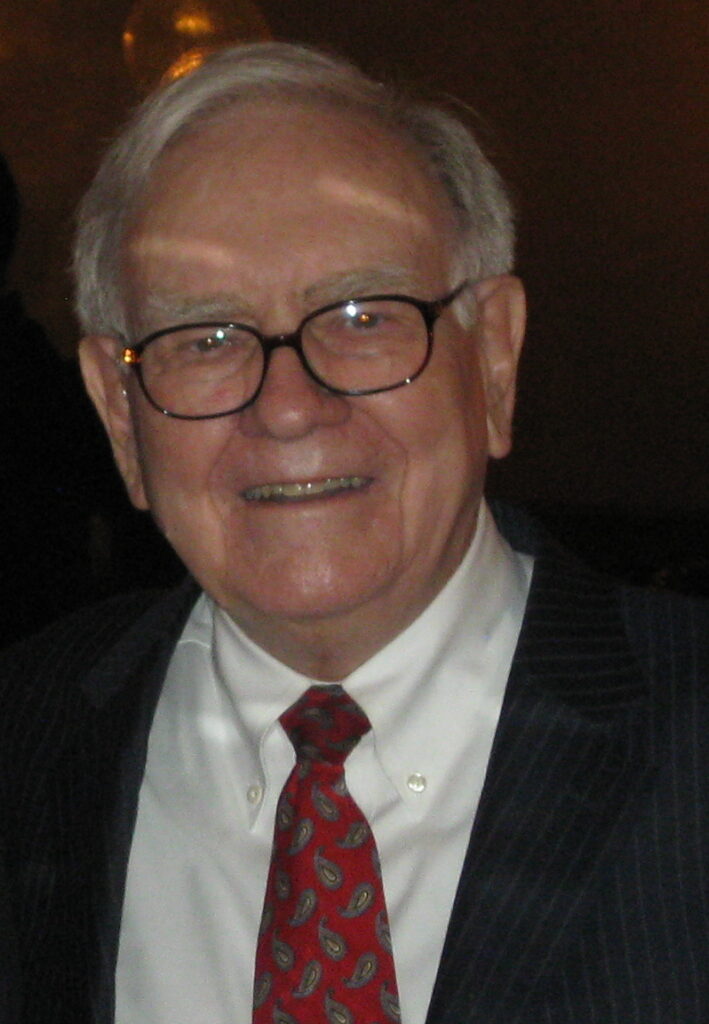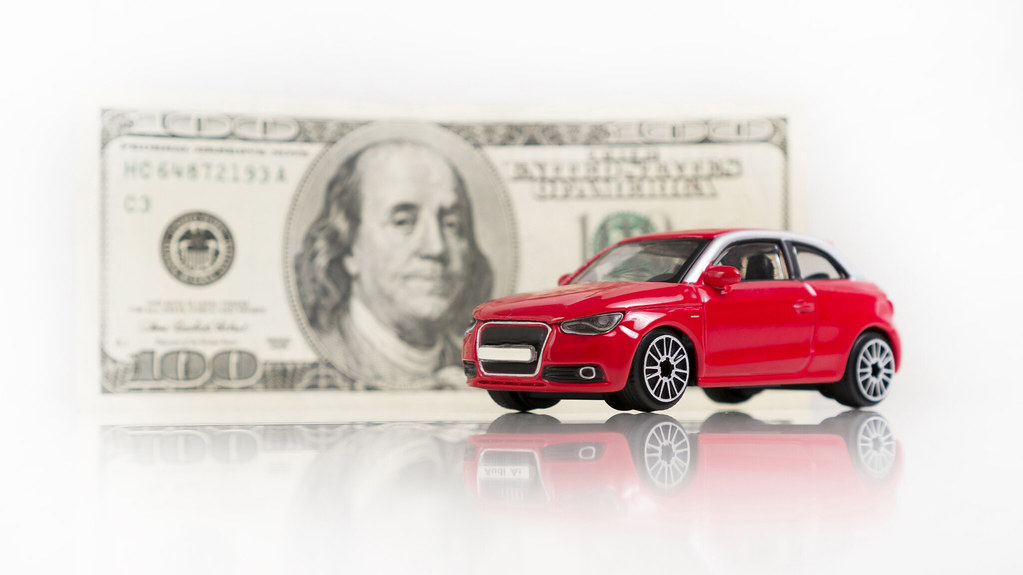
The image of a billionaire often conjures visions of extravagant luxury—private jets, sprawling estates, and, of course, a fleet of high-performance supercars. It’s a compelling narrative, one perpetuated by media and aspirational fantasies, painting a picture of relentless indulgence at the pinnacle of financial achievement. Yet, this glossy facade often obscures a surprising and far more insightful truth about many of the world’s most successful individuals, particularly concerning their daily transportation.
While some billionaires, like Microsoft co-founder Bill Gates with his Porsche 911 or Virgin founder Sir Richard Branson with his amphibious Gibbs Aquada, occasionally indulge in luxury vehicles, a powerful counter-narrative exists. This narrative highlights those who steadfastly adhere to the thrifty habits that were foundational to their success. These are individuals who, despite possessing unimaginable wealth, opt for practicality, value, and understated reliability over flashy status symbols, making choices that often mirror those of the average American.
Their choices in automobiles are not merely accidental but are deeply ingrained reflections of their financial philosophies, demonstrating a profound understanding that true wealth is accumulated and preserved through disciplined spending and a clear focus on long-term accumulation. This in-depth exploration will unveil the fascinating world of billionaires who continue to drive modest, often used, cars. We will delve into the personal stories and pragmatic reasons behind their vehicular preferences, offering invaluable lessons for anyone aspiring to build and maintain significant wealth, proving that genuine success isn’t about what you drive, but how wisely you manage your journey.

1. **Warren Buffett: The Oracle of Omaha’s Prudent Cadillac**Warren Buffett, the legendary CEO of Berkshire Hathaway, is perhaps the quintessential example of a billionaire whose lifestyle is remarkably devoid of ostentation. Known widely as the “Oracle of Omaha” for his unparalleled investment acumen, Buffett’s frugality extends to every corner of his life, from never spending more than $3.17 on breakfast to residing in the same house he purchased for $31,500 back in 1958, an amount that would be approximately $260,000 in today’s dollars.
Warren Buffett, the legendary CEO of Berkshire Hathaway, is perhaps the quintessential example of a billionaire whose lifestyle is remarkably devoid of ostentation. Known widely as the “Oracle of Omaha” for his unparalleled investment acumen, Buffett’s frugality extends to every corner of his life, from never spending more than $3.17 on breakfast to residing in the same house he purchased for $31,500 back in 1958, an amount that would be approximately $260,000 in today’s dollars.
His automotive choices perfectly encapsulate this disciplined approach. In 2014, Buffett reportedly acquired a Cadillac XTS, a car with a retail price of around $45,000. While a fine vehicle, it stands in stark contrast to the luxury cars one might expect a man of his immense fortune to drive. This purchase itself was an upgrade, necessitated only when his daughter, Susie, expressed embarrassment over his previous ride: a 2006 Cadillac DTS.
Buffett’s justification for his delayed car purchases is, as one might anticipate, profoundly pragmatic. He famously told Forbes, “I only drive about 3,500 miles a year so I will buy a new car very infrequently.” This statement highlights a core principle of his wealth accumulation: minimizing unnecessary expenses on depreciating assets. His philosophy isn’t just about buying modest cars; it’s about holding onto them for as long as possible, often seven or more years, with his favorite holding time for a vehicle being “forever.”
This deliberate decision to keep cars for an extended period, opting to upgrade only when absolutely necessary, showcases how a focus on utility and longevity over status can significantly contribute to preserving and growing wealth. For Buffett, the car is merely a tool for transportation, not a symbol of his net worth.

2. **Mark Zuckerberg: Facebook’s Founder and the Understated Acura**Mark Zuckerberg, the visionary founder and CEO of Facebook, now Meta Platforms, has fundamentally reshaped global communication and social interaction. Despite his colossal influence and staggering net worth, his personal vehicle choices reflect an almost surprising humility and a focus on practicality that aligns with the frugal mindset often seen in self-made billionaires.
Zuckerberg is frequently observed driving a black Acura TSX, a car typically valued around $30,000. This choice is particularly noteworthy given his ability to afford virtually any luxury vehicle on the market. His preference is not random; he explicitly states that he favors the Acura because it is “safe, comfortable and not ostentatious.” This statement offers a direct window into his values, prioritizing functional attributes over any form of lavish display.
Beyond the Acura, Zuckerberg is also reported to own a Volkswagen GTI, another vehicle of similar modest value. Both cars embody a blend of reliability and understated performance without drawing excessive attention or incurring the rapid depreciation associated with high-end luxury models. These choices reinforce the idea that for some of the wealthiest individuals, a car’s purpose is purely utilitarian and efficient.
His automotive philosophy underscores a crucial lesson for wealth builders: true financial independence is often built by resisting the urge to participate in the “keeping up with the Joneses” trap. By making sensible, value-driven decisions, even on purchases as significant as an automobile, Zuckerberg demonstrates a disciplined approach to asset management, allowing his wealth to grow unburdened by extravagant consumer debt.

3. **Alice Walton: Walmart Heiress’s Loyal Ford F-150**As an heiress to the immense Wal-Mart fortune, Alice Walton has long held a prominent position among the world’s wealthiest individuals. Her family’s legacy is rooted in a history of shrewd business acumen and, notably, profound frugality. Alice’s personal vehicle choice serves as a powerful testament to these enduring values, reflecting a commitment to modesty that has been a hallmark of the Walton dynasty.
Her vehicle of choice is a 2006 Ford F-150 King Ranch. With a modest price of around $40,000 when new, this pickup truck is a practical and robust choice, far removed from the opulent chariots often associated with extreme wealth. It’s a vehicle built for utility and reliability, perfectly suited to a lifestyle that values substance over show.
What makes Alice Walton’s choice even more significant is its direct lineage to her late father, Sam Walton, the legendary founder of Wal-Mart. Sam Walton himself famously drove around in the 1979 version of the exact same truck until his passing in 1992. This generational continuity in vehicle preference underscores a deep-seated family philosophy that prioritizes humility and sensible spending.
Alice Walton’s F-150 is more than just a car; it’s a symbol of inherited wisdom and a practical approach to life, even amidst incredible affluence. It demonstrates that for some of the wealthiest, the legacy of financial discipline and an unpretentious demeanor is considered more valuable than any fleeting display of luxury. Her choice speaks volumes about the understated nature of true wealth.

4. **Ingvar Kamprad: IKEA’s Visionary and His Enduring Volvo**Ingvar Kamprad, the enigmatic founder of IKEA, built a global furniture empire on the principles of affordability, practicality, and efficiency. His personal life, even after accumulating vast wealth, mirrored these corporate values to an almost legendary degree, making him a prime example of billionaire frugality. Kamprad’s commitment to avoiding unnecessary expenditures was not just a philosophy; it was a way of life that influenced every decision.
For two decades, Kamprad drove a 1993 Volvo 240 GL. This car, originally valued at approximately $22,000, eventually wouldn’t fetch more than a few thousand dollars. His devotion to this unassuming vehicle for such a prolonged period is a stark illustration of his aversion to waste and his belief in the longevity of well-made products. It was only when someone persuaded the then 91-year-old that driving it had become too dangerous that he finally relinquished it.
Kamprad’s frugality wasn’t confined to his car. He once claimed to save money by only getting his hair cut when he traveled to developing countries. In 2014, upon his return to Sweden after 40 years of tax exile, The Telegraph reported that he proudly stated on television, “If you look at me now, I don’t think I’m wearing anything that wasn’t bought at a flea market.” These anecdotes paint a vivid picture of a man utterly detached from the trappings of wealth.
His choice of an old, reliable Volvo, maintained for decades, powerfully communicates the idea that genuine value lies in durability and utility, not in constant upgrades or flashy new models. Kamprad’s life, and his car, stand as a testament to the fact that extreme wealth does not necessitate extreme spending, but rather, can be amplified by a steadfast commitment to disciplined, frugal living.

5. **Steve Ballmer: The Former Microsoft CEO’s Sensible Ford Fusion**Steve Ballmer, the energetic former CEO of Microsoft, is another prominent figure in the tech world who defies the stereotype of the luxury car-driving billionaire. Despite his considerable wealth amassed during his tenure at one of the world’s most influential technology companies, Ballmer’s choice of vehicle points to a preference for functionality and a lack of desire for automotive extravagance.
Ballmer is noted for driving a 2010 Ford Fusion Hybrid. This selection is particularly telling. It’s a reliable, efficient, and environmentally conscious choice, but certainly not a car that screams “billionaire” from its design or price point. This decision aligns with a broader trend among the affluent, as observed by personal finance guru Dave Ramsey, who suggests that “cars as status symbols seem to be a thing of the past.”
Indeed, Ramsey highlights a significant shift in the spending habits of wealthy individuals, noting that “most wealthy people are exercising frugality.” This trend is corroborated by an Experian Automotive study which revealed a compelling statistic: a whopping 61% of households earning over $250,000 annually do not drive luxury brands. Instead, their driveways are often occupied by less showy, yet highly dependable, cars from brands like Hondas, Toyotas, and Fords.
Ballmer’s Ford Fusion Hybrid, therefore, isn’t an anomaly but rather an embodiment of this evolving mindset among the wealthy. It represents a conscious decision to prioritize practical considerations—such as fuel efficiency, reliability, and an understated profile—over the fleeting allure of an expensive, rapidly depreciating luxury vehicle. His choice serves as a powerful reminder that smart financial management often means making choices that are pragmatic rather than purely aspirational.

6. **Jeff Bezos: Amazon’s Pioneer and the Reliable Honda Accord**Jeff Bezos, the groundbreaking founder of Amazon, stands as one of the most transformative figures in modern commerce, having built an e-commerce giant that has reshaped global retail. Despite his status as one of the wealthiest individuals on the planet, Bezos, especially in the earlier stages of his staggering success, maintained a surprisingly modest approach to personal transportation, demonstrating that even pioneering billionaires embrace frugality.
Long after Amazon had achieved significant market dominance and Bezos had cemented his billionaire status, he was known to drive a Honda Accord. This choice, a symbol of reliability and everyday practicality for millions, was a stark counterpoint to the luxury vehicles often paraded by the ultra-rich. It highlighted a deliberate decision to avoid automotive ostentation, even when the financial capacity for far more expensive options was readily available.
The understated nature of his car choice was so notable that it even became a point of discussion. When questioned about his Honda in a 1999 60 Minutes interview, Bezos, who then owned roughly $10 billion in Amazon stock, simply responded, “This is a perfectly good car.” His pragmatic answer encapsulated a philosophy that values functionality and efficiency over brand prestige or showmanship, a trait commonly observed among many self-made millionaires and billionaires.
Bezos’s Honda Accord stands as a testament to the idea that many who build colossal fortunes do so by focusing their resources and attention on their ventures rather than on depreciating assets designed to impress. His early automotive frugality offers a powerful lesson: prioritizing substance and core business objectives often lays a stronger foundation for wealth accumulation than indulging in status symbols.

7. **Bernard Arnault: The Luxury Empire Builder’s Older BMW**Bernard Arnault, the chairman and CEO of LVMH Moët Hennessy Louis Vuitton, presides over the world’s largest luxury goods conglomerate. His business is literally built on catering to the desires of the wealthy for high-end fashion, jewelry, and spirits. Given this context, one might expect Arnault himself to be an ardent patron of the most exclusive and cutting-edge luxury automobiles. However, his reported choice of car reveals a more nuanced perspective on personal wealth and display.
Arnault has recently been spotted in a BMW 760Li, a car that, while undoubtedly a premium vehicle, notably predates 2015. This specific detail is crucial; it indicates that he is driving an older model, rather than the latest, most technologically advanced, or highest-status luxury sedan available today. For someone whose professional life is immersed in the very definition of contemporary luxury, this choice is remarkably understated.
His decision to drive an older BMW 7 Series model, rather than a brand-new, top-of-the-line luxury car, suggests a personal discretion that may prioritize comfort and proven engineering over the fleeting prestige of owning the newest model. It speaks to a subtle yet significant distinction between the business of luxury and one’s personal consumption habits, even for the titan of that industry.
This choice demonstrates that even those at the pinnacle of the luxury world don’t always feel compelled to engage in the automotive status games that might seem expected. Arnault’s older BMW suggests a focus that lies beyond personal ostentation, perhaps redirecting resources and attention to his vast business empire or other pursuits, embodying a form of quiet confidence rather than overt display.

8. **Frugality and Financial Discipline: The Bedrock of Lasting Wealth**Beyond the individual anecdotes of billionaires and their modest cars, a foundational truth emerges about wealth accumulation: frugality and unwavering financial discipline are not just incidental quirks but deeply ingrained habits. Research consistently reveals that self-made millionaires, far from being extravagant spenders, prioritize saving and investing over conspicuous consumption. This disciplined approach is not merely a preference but a proven pathway to substantial wealth, often beginning with seemingly small, everyday decisions that compound over time.
“The Millionaire Next Door,” a seminal work by Thomas J. Stanley and William D. Danko, extensively surveyed wealthy Americans, shattering many popular stereotypes. Their findings underscored that most millionaires drive less expensive, often domestic or second-hand cars, with brands like Ford, Toyota, and Honda being far more common than high-end luxury marques. This isn’t accidental; it’s a deliberate choice rooted in a deep understanding of financial principles, where every dollar saved from unnecessary expenses becomes a dollar available for investment and growth.
The authors noted that these financially astute individuals prefer to buy their cars outright rather than lease them, aligning with their general aversion to unnecessary debt. This practice is a crucial element of their broader financial strategy, ensuring that assets are owned, not rented, and that capital is preserved. Such discipline in automotive choices reflects a wider commitment to fiscal responsibility that underpins their ability to amass significant wealth.

9. **The Power of Avoiding Depreciation: Protecting Your Assets**One of the most profound lessons from the vehicle choices of the wealthy lies in their strategic avoidance of depreciation. A new car, particularly a luxury model, can lose a significant portion of its value the moment it’s driven off the lot. For individuals focused on wealth accumulation, this immediate and substantial loss is a major deterrent, consuming capital that could otherwise be invested in appreciating assets. Financially savvy billionaires understand that rapidly depreciating assets drain resources.
As the context highlights, “large car payments can destroy the ability to build wealth; people who stay buried in car debt and depreciation tend not to get rich in the first place.” This insight is critical to understanding how wealth is truly accumulated. By opting for used cars or holding onto vehicles for many years, wealthy individuals strategically mitigate this massive financial bleed, preserving their capital and maximizing its potential for growth.
Warren Buffett, for instance, aims to keep a car for “seven or more years,” with his “favorite holding time for a vehicle being forever,” illustrating a direct commitment to minimizing depreciation and maximizing the utility of his assets. This philosophy isn’t just about saving money in the short term; it’s about making long-term financial choices that allow wealth to compound effectively, rather than being eroded by unnecessary expenses.
Read more about: Unmasking the True Price: 14 Hidden Costs That Turn Car Ownership into a Financial Maze for Every Driver

10. **Embracing an Understated Lifestyle Over Ostentation**For many of the world’s richest individuals, the desire to maintain a low profile and avoid ostentatious displays of wealth is a conscious and strategic choice. This isn’t about hiding wealth, but about prioritizing substance over superficial showmanship, a core tenet of enduring financial success. As the context notes, “not every wealthy individual desires the spotlight. For some, driving a modest car is a conscious choice to maintain a low profile, avoiding the potential pitfalls and pressures that can come with overt displays of wealth.”
This understated approach allows them to focus their energy and resources on their ventures, philanthropy, or personal growth, rather than on impressing others or engaging in endless consumerism. Mark Zuckerberg’s explicit preference for an Acura because it is “safe, comfortable and not ostentatious” perfectly encapsulates this mindset. Similarly, Sam Walton famously questioned, “Why do I drive a pickup truck? What am I supposed to haul my dogs around in, a Rolls Royce?” highlighting his belief that a vehicle’s purpose is functional, not a measure of one’s financial standing.
Their deliberate choice for modesty often serves as a practical shield, allowing them to move through society without drawing undue attention, which can be invaluable for personal security and focused business endeavors. This form of quiet luxury, prioritizing personal comfort and utility, ultimately enables them to channel their vast resources towards more impactful pursuits, solidifying their wealth rather than simply displaying it.
Read more about: Inside Jordan Spieth’s Curated Garage: A Deep Dive into the Golfer’s Luxurious Yet Practical Car Collection and Dallas Estate

11. **Prioritizing Practicality and Utility in Automotive Choices**At its core, a car is a tool for transportation, and for many wealthy individuals, this fundamental function dictates their choice of vehicle. Rather than being swayed by luxury or aesthetics, they prioritize practicality, reliability, and utility above all else. This pragmatic mindset ensures their automotive decisions align with their broader financial philosophy, focusing on efficiency and sustained value rather than fleeting trends.
The mega-rich, as the context points out, “prefer drivers and private jets over exotic cars,” suggesting that for their personal driving needs, a car serves a simple, functional purpose without the need for excessive ornamentation. Jeff Bezos’s response when questioned about his Honda Accord—”This is a perfectly good car”—is a powerful illustration of this philosophy, underscoring a belief in the inherent utility of a reliable vehicle over its potential for status projection.
Alice Walton’s 2006 Ford F-150 King Ranch, a practical and robust choice, further exemplifies this dedication to utility. It’s a vehicle “built for utility and reliability,” perfectly suited to a lifestyle that values substance over show, echoing her father Sam Walton’s own unpretentious choice of the same truck. Such choices reflect a deep-seated appreciation for what a vehicle *does*, rather than what it *represents*.
This focus on practicality extends to minimizing ongoing costs. Research consistently shows that “the cheapest cars to maintain include various Toyotas, Hondas, Kias and Nissans.” By choosing such reliable and cost-effective vehicles, the wealthy further minimize ongoing expenses, ensuring their automotive choices support, rather than detract from, their overall financial health.
Read more about: The 15 Hardy Coupes That Can Easily Reach a Quarter Million Miles Unchallenged

12. **Resisting the “Keeping Up with the Joneses” Trap: The Wealth-Building Imperative**One of the most destructive habits for wealth accumulation is the “keeping up with the Joneses” trap, where individuals continuously upgrade their possessions to match or exceed those of their peers. Self-made millionaires and billionaires, however, actively resist this pervasive societal pressure, understanding that it diverts crucial capital from investment to depreciating assets, thereby hindering long-term financial growth. As the context directly states, “wealthy people don’t get rich by spending all their money on depreciating assets to impress their neighbors.”
The research from Experian Automotive, published on Forbes, strikingly reveals that “a whopping 61% of households earning over $250,000 annually do not drive luxury brands.” Instead, their driveways are often occupied by “less showy, yet highly dependable, cars from brands like Hondas, Toyotas, and Fords.” This statistic profoundly challenges the stereotype of the wealthy, illustrating a widespread commitment to sensible spending that allows their wealth to grow unchecked by unnecessary consumer debt.
Dave Ramsey, a personal finance guru, further emphasizes this point, noting that “when people don’t waste money trying to look wealthy, they have money to actually become wealthy.” This principle is not just theoretical; it’s a lived reality for those who build immense fortunes. By consciously choosing vehicles that serve a purpose without demanding constant upgrades, they inoculate themselves against lifestyle inflation, preserving their financial independence.

13. **Value-Driven Decisions: The Core of Millionaire Car Choices**The choices made by billionaires and self-made millionaires regarding their automobiles are fundamentally driven by a strong sense of value rather than fleeting status. They approach car ownership with a long-term perspective, meticulously weighing the true cost, reliability, and utility against the perceived prestige of a luxury brand. This discerning approach aligns with the findings of “The Millionaire Next Door,” which reported that “the choice of car for many millionaires was based on weight, reliability, and functionality rather than status.”
This value-driven philosophy extends beyond the initial purchase to the entire lifecycle of the vehicle. By driving old cars for a long time, as suggested in the context, they realize significant savings on insurance, taxes, and even maintenance, transforming a major expense into a manageable one. While a new luxury car might initially seem appealing, the rapid depreciation and higher ongoing costs quickly erode its value, making it a poor investment in the eyes of a true wealth accumulator.
In contrast, a well-maintained, modest vehicle retains its utility for years, delivering consistent value without the associated financial drain. This strategic patience and focus on longevity is a key differentiator in their financial behavior. It’s about maximizing the return on every dollar spent, understanding that true value lies in sustained utility and minimal financial leakage, rather than immediate gratification.

14. **The Million-Dollar Impact of Prudent Automotive Decisions: A Path to Financial Freedom**The cumulative effect of making sensible automotive choices can have a truly transformative impact on one’s wealth accumulation journey, potentially leading to millions of dollars in saved and invested capital. The example provided in the context illustrates this powerfully: the difference between spending $1,000 a year versus $10,000 a year on car ownership, invested at 8% over 30 years, “will get a million dollars.” This stark reality underscores that decisions about transportation are not minor financial footnotes but pivotal choices that can determine one’s financial destiny.
This profound difference highlights that for many Americans, “automobile choices” are a significant barrier to building wealth. Indeed, the context emphasizes that “no consumption item, except a house, will make as much of a difference in your accumulation of wealth.” By choosing to drive older, more affordable vehicles for extended periods, individuals free up substantial capital that would otherwise be tied up in depreciating assets and hefty payments.
This freed-up capital can then be channeled into investments, retirement accounts, or other wealth-generating assets, accelerating their path to financial independence. The financial discipline exhibited by these billionaires in their car choices serves as a powerful testament to the long-term rewards of strategic frugality and value-driven decisions in every aspect of life.
The fascinating paradox of billionaires driving modest cars offers invaluable insights into the true nature of wealth. It’s a compelling narrative that shifts focus from outward displays of luxury to the foundational habits of frugality, discipline, and astute financial management. From avoiding rapid depreciation to prioritizing utility over ostentation and resisting the “keeping up with the Joneses” trap, these strategies are not just for the ultra-rich; they are universal principles for anyone aspiring to build and preserve significant wealth. Their quiet confidence and understated choices remind us that genuine success isn’t about the car in your driveway, but the strategic journey you undertake towards lasting financial independence, a journey defined by wise decisions and a focus on enduring value.



